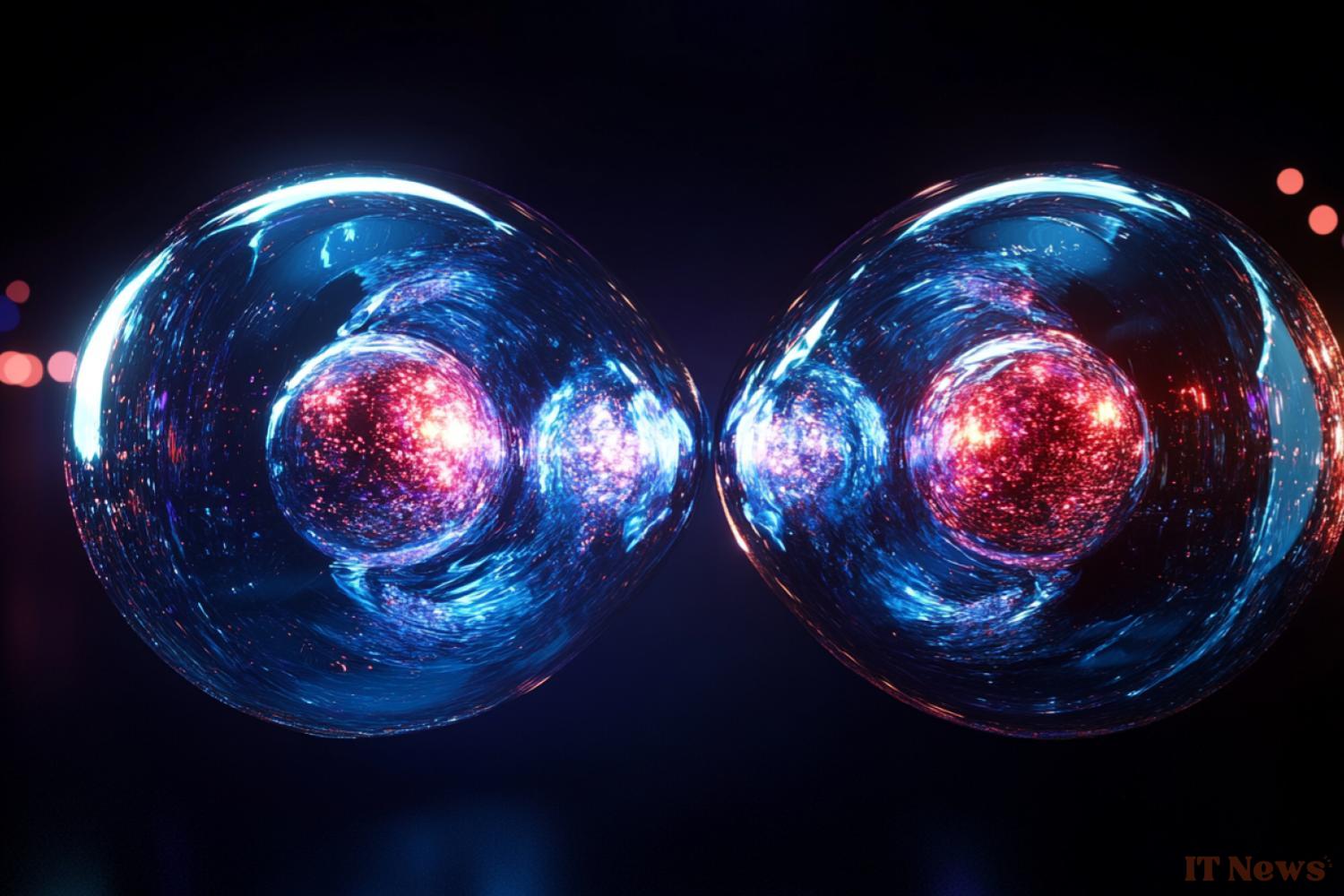CERN researchers have observed a strange trend in data from the Large Hadron Collider, or LHC: one of the basic building blocks of matter appears to be able to temporarily pair up with its antimatter twin, opening a window onto new phenomena that could revolutionize fundamental physics.
This story began when researchers responsible for the Compact Muon Solenoid (CMS), one of the LHC's highly sophisticated detectors, were reviewing old data. They hoped to find new hypothetical variants of the famous Higgs boson, suspected of being the source of the mass of other particles.
A strange excess of quarks
According to the predictions of CERN physicists, if such particles do indeed exist, they probably tend to interact strongly with top quarks, one of the basic constituents of matter. This prediction is based in particular on the mass of this type of quark, which has the particularity of being extremely heavy compared to its infinitesimal size.
These alternative bosons, if they existed, would probably decompose into a binary object made up of a top quark and a top antiquark, the equivalent of the latter in the realm of antimatter. This pair, called a tt pair, would then in turn decay, producing a jet of particles detectable by the CMS.
Therefore, observing more tt pairs than expected could be a sign that another, previously unknown particle was also produced by the collision. And it is precisely such an excess that the study authors observed in the analyzed data. This is an exciting discovery, since this result points directly to the presence of a previously unidentified particle.
But another disturbing detail emerged at this moment.
Toponium shows the tip of its nose
In the LHC, protons collide at extremely high energy levels. During the collision, energy can be converted into mass, creating new particles according to Einstein's famous equation E=mc². To create a top and antitop (tt) quark pair, the collision must provide at least twice the mass of the top quark. This is about 346 GeV (gigaelectronvolts). This is called the production threshold—the minimum energy needed to produce exactly one top-antitop pair.
In theory, the curve representing the production of these tt pairs as a function of energy level would be expected to be fairly smooth: it starts at the production threshold and gradually becomes steeper as the energy increases. However, the CMS data showed that tt pair production peaked precisely at the threshold, not at higher energy levels where these pairs are generally much more common! This phenomenon, which is completely unpredicted by the Standard Model, is very interesting for researchers. Indeed, this type of inconsistency generally points to the formation of an unstable, short-lived object.
According to the authors, it is likely to be toponium— an unstable, never-before-observed entity that forms briefly due to the resonance between a top and anti-top quark. This is a particularly exciting prospect for CERN physicists for several reasons.
A Potentially Revolutionary Discovery
First, it would mean that we have now observed the entire family of quarkoniums—entities where members of a quark-antiquark pair not only coexist, but are bound together by a resonance phenomenon. The first two, charmonium (charm quark + charm antiquark) and bottomonium (bottom quark + bottom antiquark), were already observed in the 1970s; Toponium, on the other hand, has been missing ever since.
It was even thought that it would probably be impossible to detect it, due to its exceptional instability. Indeed, isolated top quarks have the annoying habit of decomposing into two other particles in an incredibly short time: the whole phenomenon takes place in less time than it takes for light to travel 0.1 femtometers, or one tenth of a millionth of a billionth of a meter!
And this is where this discovery becomes absolutely fascinating. In general, since quarkoniums are composed of matter and antimatter (a quark and its antiquark), the two constituents tend to annihilate each other. But toponium, for its part, seems so unstable that this phenomenon would not even have time to take place: the spontaneous decay into bottom quarks and W bosons (a fascinating object in itself) occurs before the annihilation!
CERN: an ultra-precise measurement of the W boson dashes physicists' hopes
If this result is subsequently confirmed, the detection of this phenomenon within the LHC could therefore open a new window on the behavior of the top quark. A very promising avenue of research, since it is a fundamental constituent of matter that plays a decisive role in the structure of our universe.
Ultimately, this could lead to the discovery of new exotic phenomena beyond the standard model of particle physics, with all that this implies for our understanding of the world around us.
The text of the study is available here.



0 Comments